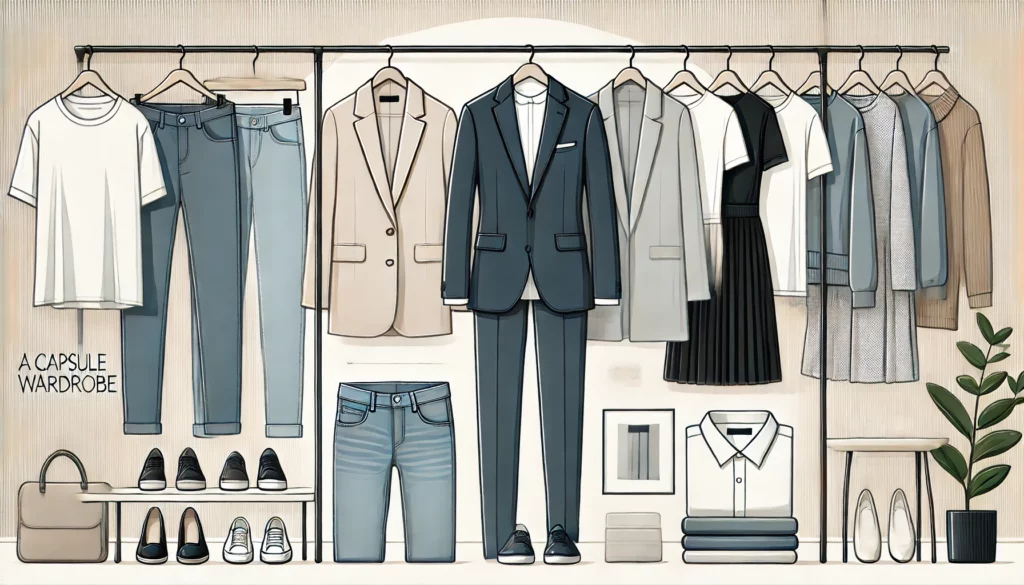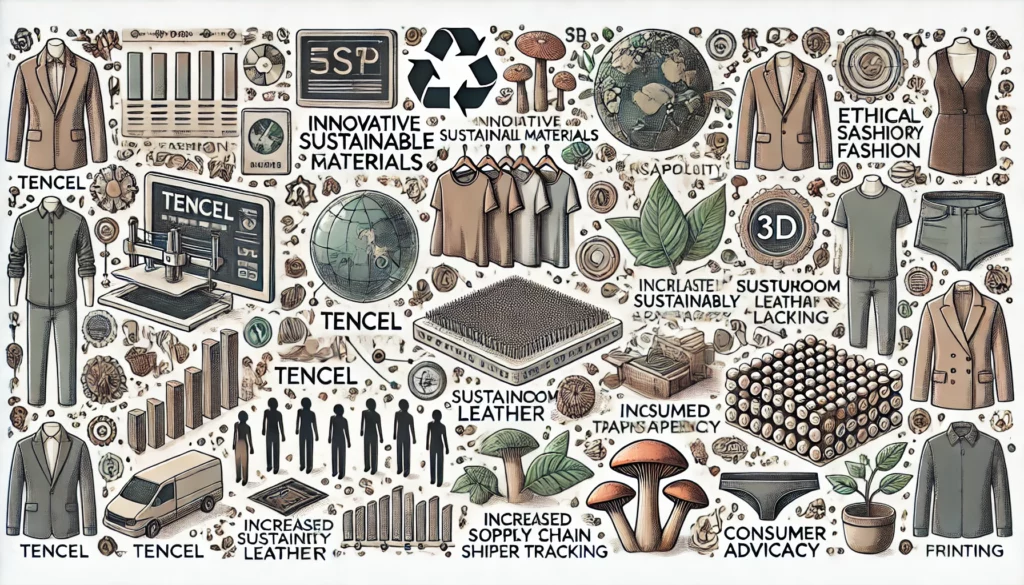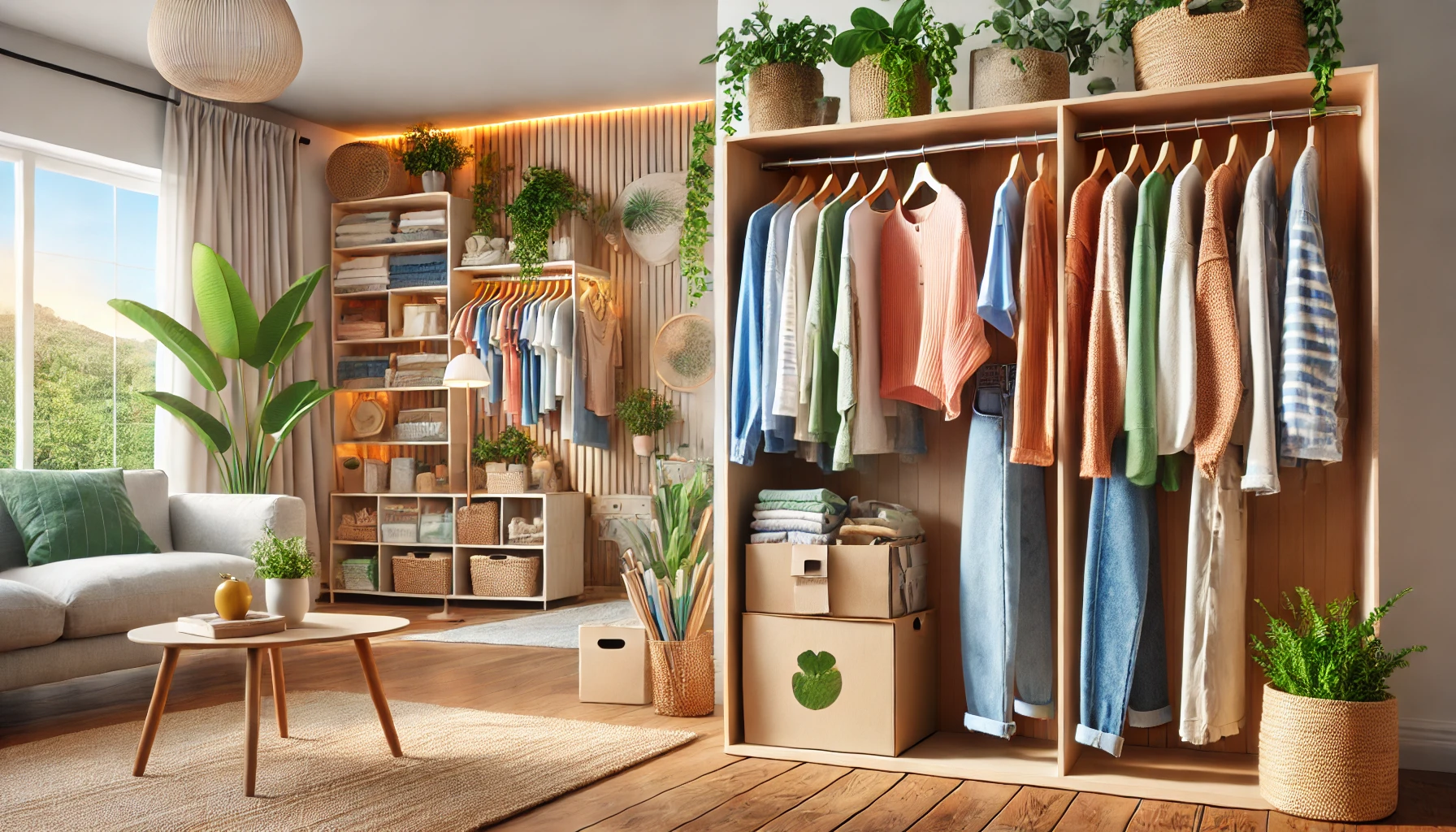Sustainable Fashion: Green Your Wardrobe with Eco-Friendly Choices
Introduction to sustainable fashion
In today’s fashion-conscious world, the allure of sustainable fashion has never been stronger. As consumers become increasingly aware of the environmental and ethical impacts of their clothing choices, the shift towards eco-friendly wardrobes is gaining momentum. Sustainable fashion isn’t just a trend; it’s a necessary evolution in how we approach our attire. This guide will delve into the myriad benefits of sustainable fashion, offer practical tips for building an eco-friendly wardrobe, and explore future trends in ethical fashion. By making informed choices, you can enjoy style that aligns with your values and contributes to a healthier planet.
Benefits of Sustainable Fashion
Environmental Impact
Sustainable fashion significantly reduces the carbon footprint associated with traditional clothing production. By using eco-friendly materials and processes, it conserves water and natural resources, and minimizes waste. Brands like Patagonia and Stella McCartney lead by example, using recycled materials and sustainable practices to create their collections (Good On You) (Sustainable Earthlings).
Ethical Production
Ethical fashion ensures fair labor practices, safe working conditions, and support for local artisans. Companies committed to ethical production often prioritize transparency in their supply chains, ensuring that workers are treated fairly and paid livable wages. Brands like People Tree and Everlane are known for their dedication to ethical labor practices (The Green Muse).
Quality and Longevity
Sustainable materials are often more durable, meaning they last longer and provide better value for money. Investing in quality pieces reduces the need for frequent replacements, thereby decreasing overall consumption. High-quality garments from sustainable brands like Eileen Fisher are designed to withstand the test of time (Wonder Wardrobe ).
Health Benefits
Choosing sustainable fashion also has health benefits. Many conventional clothing items are treated with harmful chemicals that can cause skin irritation and other health issues. Sustainable fashion, on the other hand, often uses natural fibers and non-toxic dyes, making it safer for both the environment and your skin (Perch Energy).
Tips for Building an Eco-Friendly Wardrobe for sustainable fashion
Research Brands
Identify truly sustainable brands by looking for certifications such as Fair Trade, GOTS (Global Organic Textile Standard), and B Corp. Websites like Good On You provide ratings and reviews of various brands based on their sustainability practices (Good On You) (The Jerusalem Post).
Second-Hand and Vintage Shopping
Buying second-hand clothes is a great way to reduce waste and save money. Thrift stores, online platforms like ThredUp and Poshmark, and local vintage shops offer a treasure trove of pre-loved items that can add unique flair to your wardrobe (The Green Muse).
Capsule Wardrobe
Creating a capsule wardrobe involves selecting versatile, timeless pieces that can be mixed and matched to create numerous outfits. This approach reduces the need for excess clothing and encourages thoughtful purchasing decisions. Key items include a classic blazer, well-fitted jeans, and a white shirt (Sustainable Earthlings).

DIY and Upcycling
Upcycling old clothes into new items can be a fun and creative way to extend their life. Simple projects like turning an old t-shirt into a tote bag or adding patches to worn-out jeans not only reduce waste but also allow you to personalize your wardrobe (The Jerusalem Post).
Care and Maintenance
Properly caring for your clothes can significantly extend their lifespan. Follow care instructions, wash clothes in cold water, air dry when possible, and repair minor damages instead of discarding items. This reduces the need for new purchases and keeps your clothes looking fresh (Perch Energy).
Future Trends in Ethical Sustainable Fashion
Innovative Sustainable Materials
New eco-friendly materials, such as Tencel, Econyl, and mushroom leather, are being developed to reduce environmental impact. Brands like Adidas and Stella McCartney are incorporating these innovative materials into their collections (Sustainable Earthlings) (Wonder Wardrobe ).

Technological Advancements
Technology is playing a significant role in advancing sustainable fashion. From 3D printing to digital fashion shows, technology is helping to reduce waste and improve production efficiency. Companies like Fashion for Good are at the forefront of these technological innovations (Good On You).
Increased Transparency
Consumers are demanding greater transparency from brands regarding their supply chains and production practices. This trend is pushing more companies to disclose detailed information about their sourcing and manufacturing processes, thereby fostering trust and accountability (The Green Muse).
Consumer Awareness and Advocacy
With rising consumer awareness, there is an increasing demand for sustainable options. Consumers are becoming more vocal about their preferences and supporting brands that align with their values. This shift is driving significant changes in the fashion industry towards more sustainable practices (The Jerusalem Post).
Conclusion
Embracing sustainable fashion is not just about making eco-friendly choices; it’s about fostering a deeper connection with the clothes we wear and the impact they have on the world. By understanding the benefits, adopting practical tips, and staying informed about future trends, you can build a wardrobe that reflects your values and contributes to a more sustainable future. Let’s make conscious fashion choices today for a better tomorrow.
FAQs about Sustainable Fashion
1. What are the most sustainable fabrics to look for?
Some of the most sustainable fabrics include organic cotton, bamboo, hemp, and recycled materials like polyester and nylon. These fabrics have a lower environmental impact compared to conventional fabrics. Organic cotton, for example, is grown without harmful pesticides and requires less water. Bamboo is fast-growing and requires minimal resources. Hemp is durable and grows quickly, making it a highly sustainable option. Recycled materials reduce the demand for new resources and help minimize waste (Sustainable Earthlings) (Perch Energy) (The Jerusalem Post).
2. How can I verify if a brand is truly sustainable?
Verifying the sustainability of a brand can be done by checking for certifications such as Fair Trade, GOTS (Global Organic Textile Standard), and B Corp. These certifications ensure that the brand follows ethical and sustainable practices. Additionally, researching the brand’s manufacturing processes, labor practices, and environmental policies can provide more insight. Websites like Good On You rate brands based on their sustainability credentials and can be a valuable resource (Good On You) (The Green Muse) (The Jerusalem Post).
3. Can sustainable fashion be affordable?
Yes, sustainable fashion can be affordable. Shopping second-hand is one of the best ways to find budget-friendly sustainable clothing. Thrift stores, online second-hand platforms, and vintage shops offer unique and affordable options. Additionally, focusing on quality over quantity can be cost-effective in the long run, as well-made garments last longer and reduce the need for frequent replacements. Some sustainable brands also offer affordable pricing by using innovative materials and production methods (The Green Muse) (Perch Energy) (The Jerusalem Post).
4. Is vegan leather a sustainable option?
Vegan leather can be a sustainable option if it is made from eco-friendly materials like pineapple leaves (Piñatex), apple peels, or recycled plastics. However, not all vegan leathers are created equal. Some synthetic vegan leathers are made from petroleum-based materials, which are not environmentally friendly. It’s important to check the materials used and opt for those that have a lower environmental impact. Brands like Veja and Matt & Nat offer vegan leather products made from sustainable sources (Perch Energy) (The Jerusalem Post).
